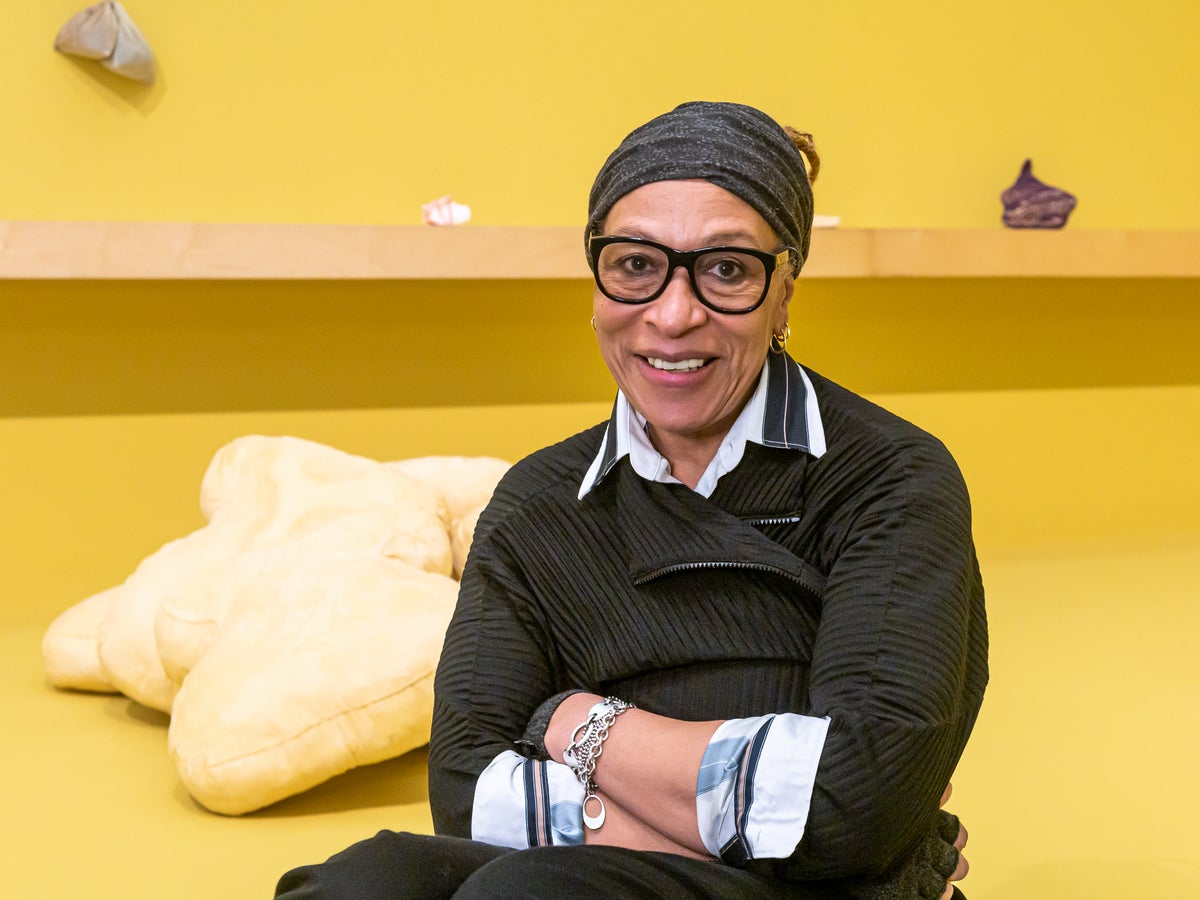
Anyone remember the glory days of the Turner Prize? When every cabbie had an opinion on who should win Britain’s best-known and most “controversial” art award? When the term “Turner Prize art” came to denote a whole swathe of “pretentious” cutting-edge art, which evoked a curious mixture of derision and pride in the public at large? If there was a World Cup for wacky modern stuff, Turner Prize art with its dead sharks and lights going on and off meant that good old Blighty would be in the final at the very least. And we do like a competition, don’t we? That all feels a lifetime ago, in the light of today’s award to Veronica Ryan, in a competition that seemed to offer no obvious winner.
After a tricky period featuring a collaborative win (2019), a cancellation (2020) and an array of underwhelming creative collectives (2021), the 2022 Turner shortlist marked a return to the prize’s classic format, if not quite its absolutely classic form. We were back to four artists competing on a level playing field on the basis of an exhibition held over the previous 12 months. Well, not quite.
The only thing surprising in the fact that all four finalists were women or non-binary was that this had never happened before. Two of them, Heather Phillipson, 44, and Sin Wai Kin, 31, were on the younger side; both seemed to be on the shortlist to represent the bracingly current. Their co-finalists, veteran artists of colour with strong track records in artistic activism, were Ingrid Pollard, 69, and Veronica Ryan, 66. There’s nothing anomalous about that in principle: why shouldn’t artists in their sixties, seventies or eighties also produce art that is as bracingly current?
The fact is, though, that the Turner is specifically designed not to be a lifetime achievement award. Pollard’s nomination was on the basis of a retrospective exhibition, and some of the work in her Turner Prize exhibition is decades old. No disrespect to Pollard. I actually tipped her to win. But on reflection that would have fatally skewed the prize away from its aim of “reflecting the state of British art”, and damaged its credibility as a publicly accessible showcase for the most radical work going on in Britain today.
The composition of this year’s judging panel was also a cause for concern. Three of the judges run the galleries where the shortlisted shows took place and a fourth served as a curator. To call the situation a hornet’s nest of conflicted interests would be grotesquely over-polite.
But, to get back to the art: we have Phillipson’s climate change-inspired indoor rave – or “eco-system” as she describes it – with its saturated pink and purple lights, apocalyptic videos and foreboding mumblings on the future. There is Ryan’s yellow-tinged environment with its fruits, seeds and nuts suspended in nets and crochet bags, paying grateful tribute to the fruits and medicines the artist’s Montserrat-born mother fed her during her London childhood. Then there is Sin’s poly-sexual, poly-identity boy band videos and filmic meta-fictions, referencing everything from Tik-Tok to Peking opera, in which the artist plays all the roles. Pollard’s collection of grinding junk-robotic figures acting out a jerky violent charade are some of the most arresting works in the show. But given how much of her exhibition dates from other periods, she didn’t feel a viable contender.
None of the others seemed to me an obvious winner. Ryan’s work has some lovely poetic ideas about how identity is perpetuated through the smaller things in life, but seemed too quiet and understated, and ultimately perhaps not quite resolved enough to bag a prize of this order.

I felt I should like bookie’s favourite Phillipson’s immersive installation-cum-happening a lot more than I did. As a child of the 1960s, I’m temperamentally inclined to like anything that feels like a psychedelic night club. But there’s something facile in the work’s cartoonish retro overload of glowing boulders and flickering LED screens. Throwing in everything including the acid-tinged kitchen sink isn’t enough when the messages, such as there are, feel obvious.
Sin’s operatically scaled social media posting spells “youth” and a self-obsessed, transformative online culture of which the judges will likely have little experience. They may have felt inclined to reward it to demonstrate their in-touchness. It’s clever, confident, dizzyingly slick in execution, and so complacently multi-referential it’s almost unbearable to watch in more than five-minute chunks – certainly for anyone over thirty, maybe twenty. Which probably means that only in the bravest of worlds would it win.

Instead, the winner is Veronica Ryan with the most sensitive, delicately personal and, on the face of it, least likely and least newsworthy of the four contributions. It is work rooted in the immigrant experience of Britain, but which anyone can relate to, with its intimate sense of the passing of knowledge between generations. To see a woman of well over sixty honoured for work that is very much of the now should warm all our hearts. The Turner Prize, meanwhile, holds its credibility to fight another day.







